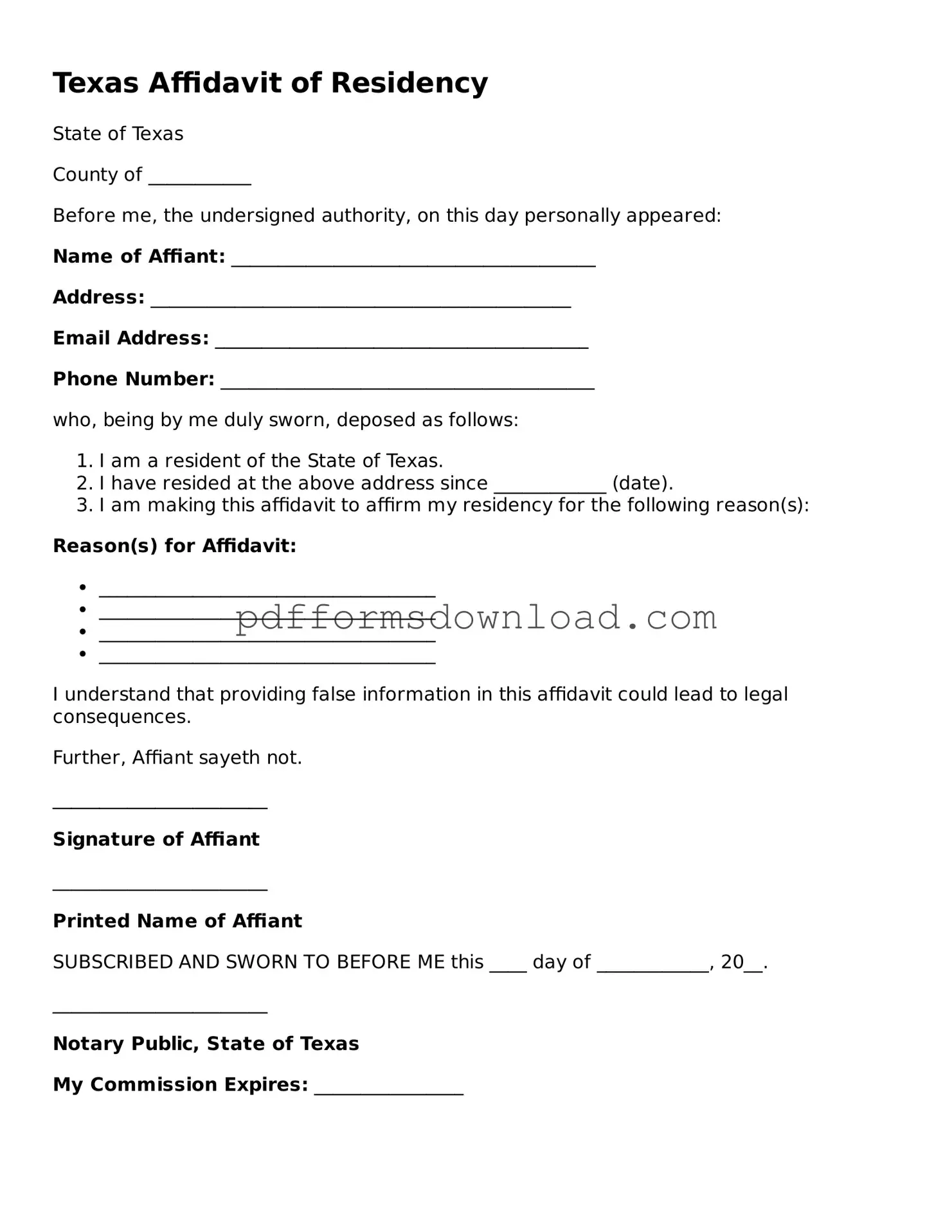What is the Texas Affidavit of Residency form?
The Texas Affidavit of Residency form is a legal document that helps establish a person's residency in Texas. This form is often used for various purposes, such as enrolling in school, obtaining a driver's license, or applying for state benefits. By completing this affidavit, you are providing a sworn statement regarding your residency status, which can be crucial for many official processes.
Who needs to fill out the Affidavit of Residency?
Typically, individuals who need to prove their residency in Texas will fill out this form. This includes students who wish to enroll in public schools or universities, individuals applying for certain government services, or anyone who needs to establish their residence for legal reasons. If you have recently moved to Texas or are living with someone in the state, this form may be necessary.
How do I complete the Texas Affidavit of Residency form?
Completing the form is straightforward. You will need to provide your name, address, and other identifying information. Additionally, you may need to include details about your residency situation, such as how long you have lived at the address provided. After filling out the form, it's important to sign it in front of a notary public, who will verify your identity and witness your signature.
Where can I obtain the Affidavit of Residency form?
You can usually find the Texas Affidavit of Residency form online through the Texas Department of Public Safety or your local school district's website. Many public institutions also have copies available at their offices. If you prefer, you can ask for assistance at a local government office, where staff can help you access the form.
Is there a fee to submit the Affidavit of Residency?
Generally, there is no fee associated with completing or submitting the Affidavit of Residency itself. However, if you need to have the document notarized, there may be a small fee for that service. Always check with the specific institution or agency requesting the affidavit, as they may have their own policies regarding fees.
What should I do if my residency situation changes?
If your residency situation changes—such as moving to a new address—you will need to update your Affidavit of Residency. It's important to keep your residency information current, especially if you are using the affidavit for school enrollment or other legal purposes. In such cases, fill out a new form and have it notarized again to ensure that all your information is accurate and up to date.
